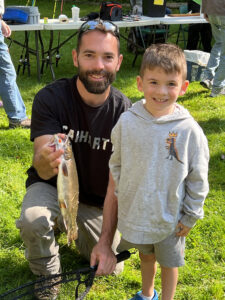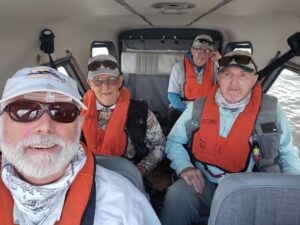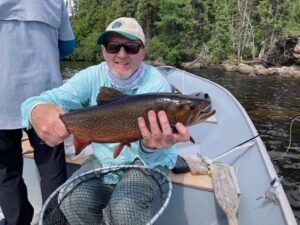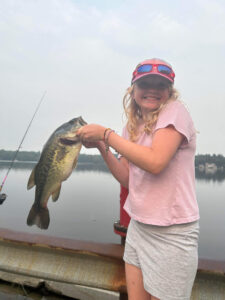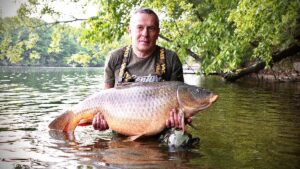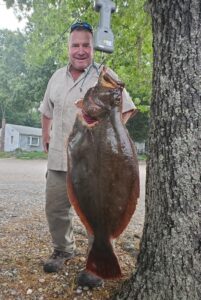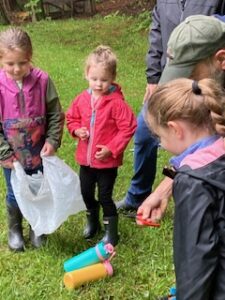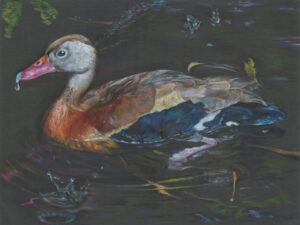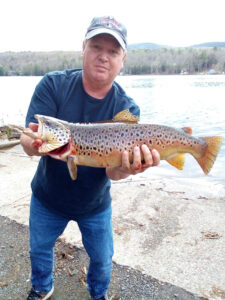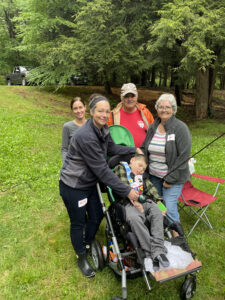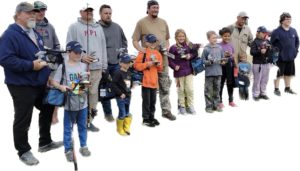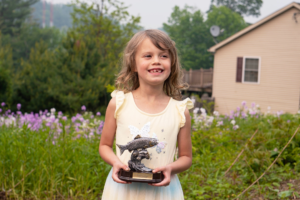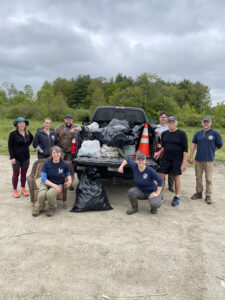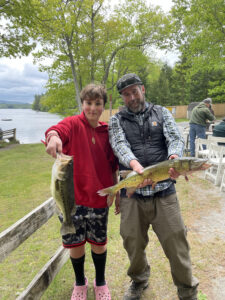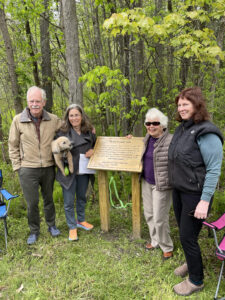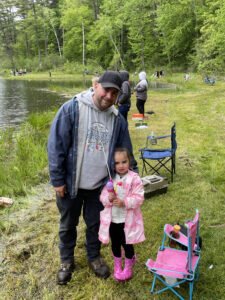By now Massachusetts deer hunters should know if they were selected to receive an antlerless deer permit (ADP), also known as a doe permit. If not, they can simply click onto the MassFishHunt web page to find out. Of course, they had to apply for the permit by July 16 to be eligible.
If selected, Massachusetts residents need to pay the $10.00 fee to purchase the permit. The permit fee costs $15.00 for non-resident deer hunters.
It’s a lottery system, and not every hunter who wanted one in the wildlife management zone of their choice got one. The difference between allocation and demand determines the odds of winning an ADP. The exceptions are those who applied for permits in Zones 10, 11, 13, and 14 where everyone who applied got one. There are too many deer in those zones and MassWildlife is trying to reduce the herd to desirable numbers where there is sufficient food and habitat to sustain them.
There still is a chance to get a permit. Surplus ADPs will go on sale as follows: A limited number of permits for Zones 3, 7, 9 and 12 will go on sale on a first-come, first-served basis starting 9:00 am on September 27. The limit is one ADP per zone per day until sold out.
Permits for Zones 10, 11, 13 and 14 will go on sale at 9:00 am on September 26. There is no season purchase limit for these zones and they are available throughout the 2023 deer season.
Hunters with a valid hunting or sporting license can buy Surplus ADPs even if they did not previously apply for a permit.
I live in Zone 3 and the deer in my neighborhood have become a real nuisance, especially where my vegetable garden is concerned. I’ve always known they relish cabbages, beans, peas, carrots, corn, etc., so I put a 5-foot fence around those veggies. It doesn’t matter. They simply jump over it and devour the succulent plants. What really gripes me now is that they are developing a taste for my other vegetables. Never did I ever have to fence in my onions, leeks or potatoes, but now I do. When some of my neighbors told me that they had seen deer chomping away in those sections, I didn’t believe them until I saw the deer tracks.
For dessert, they like to raid my wife Jan’s raspberry patch.
What they don’t eat, the black bears do, especially our corn crop. They seem to know exactly when to raid it, usually a day or so before it’s ripe enough to pick.
I haven’t even mentioned the wild turkeys that fly over the fencing into the garden and peck away at our tomatoes, or the bunnies and woodchucks that sneak in, the voles that attack the root veggies, or the crows that pull up the young corn and bean plants. Like Rodney Dangerfield, we get no respect.
Ah, my father never had that problem. Back in the 1950’s we never had bears or turkeys and rarely saw a deer track within a mile of our place because there were so few of them around. I have to admit, since then MassWildlife has done a wonderful job of managing and increasing their numbers. I just wish they would tell them to stay away from our gardens.
Nice event at the Hatchery
There was a nice turnout for the Berkshire National Fish Hatchery Kid’s Derby in Hartsville/New Marlborough last Saturday morning. According to Dave Ziegler, the Friends of the Berkshire National Fish Hatchery Board Chairman and official fish measurer, over 45 youths participated in the free derby. Counting parents, grandparents, relatives and friends, about 100 people showed up.
Members of the Berkshire Bass, Taconic Chapter of Trout Unlimited, MassWildlife Western District, US Fish & Wildlife Service, Lee Sportsmen’s Association, Berkshire County League of Sportsmen, and others were there to help teach the kids how to fish, remove the hooks from the fish, etc. They kids had the option of keeping or releasing them.
Dave was kept busy measuring fish after fish with about 120 of them being measured in the 1 ½ hour derby span.
Catching the largest fish was 5-year old Walker Stubbs of Sandisfield. He caught a brook trout measuring just over 14½ inches. 2nd place went to Lucy Siebert with a 14¼ inch trout. 3rd place went to Josh Bell with a trout just shy of 14¼ inches and 4th place went to Lilly Labeau with a 14-inch trout. They won some neat fishing tackle. Actually, all the kids went home with a prize
After the derby was over, people had a chance to tour the hatchery and check out its newly installed 270-gallon display fish tank, have a free snack, learn how to cast or tie a fly, and visit the various booths manned by the Friends of the Berkshire National Fish Hatchery, Lee Sportsmen’s Association, MassWildlife, Berkshire Bass, US Fish & Wildlife Service, Boy Scouts, and Taconic TU.
The open house was coordinated by Board member Dean Hutson.
Asteroid named for retired MassWildlife leader
The following article was taken from the MassWildlife August 2023 Newsletter:
In recognition of his 35 years of dedicated and effective conservation work, an asteroid measuring 2 to 5 kilometers in diameter was recently named after Dr. Thomas W. French, the founding leader and former Assistant Director of MassWildlife’s Natural Heritage and Endangered Species Program (NHESP). Unlike comets, which are usually named after their discoverers, asteroids are named for mythological figures and geographical places—or for renowned scientists, explorers, poets, composers, novelists, and other prominent figures.
The Paris-based International Astronomical Union (IAU) officially named minor planet 1991 PN2 as “(20010) Tomfrench”. The IAU’s 15-member Working Group for Small Bodies Nomenclature (WGSBN) is the sole scientific organization with the authority to assign names to small solar system bodies like asteroids, comets, and satellites of minor planets.
Imelda B. Joson and Edwin L. Aguirre, both former editors of Sky & Telescope magazine, have known Dr. French for 16 years and proposed the naming to the IAU. The couple first met French in 2007 in Lowell, where they volunteered to monitor peregrine falcons.
“This is a completely unexpected and humbling honor,” said Dr. French. “I hope that recognizing me with this honor is a validation of how important it is for all of us to help conserve the health and natural diversity of our world.”
The naming of the asteroid recognizes Dr. French’s contributions to wildlife restoration, protection, and conservation. The citation, which was published in the IAU’s WGSBN Bulletin on July 3, 2023 reads:
Thomas W. French (b. 1950), a biologist and former assistant director of MassWildlife’s Natural Heritage and Endangered Species Program, led the successful reintroduction of peregrine falcons and bald eagles in Massachusetts after their native populations were wiped out due to extensive use of the insecticide DDT from the 1940s to 1972.
“We are so happy that the international astronomical community has recognized Tom’s contributions to advancing our knowledge of the natural world as well as informing the public on the importance of preserving our planet’s biodiversity,” says Aguirre.
“Tom is a true gentleman scientist, and his experience, passion, dedication, knowledge and professionalism are exceptional,” added Joson. “We’re glad to know that a huge chunk of real estate bearing Tom’s name is now floating out there in space!”
Asteroids are small, rocky bodies left over from the birth of the solar system about 4.6 billion years ago. According to the WGSBN Bulletin, asteroid (20010) Tomfrench was discovered on August 2, 1991, by the European Southern Observatory in La Silla, Chile. Asteroid (20010) Tomfrench takes 3.9 years to complete one orbit around the Sun. It is currently about 480 million kilometers from Earth, shining very dimly in the constellation Taurus. One would need a fairly large telescope and sensitive CCD camera to record its faint, starlike image.
During his career with MassWildlife, Dr. French oversaw field research, habitat restoration and management, rare species restoration, permitting the possession of wildlife for research and education, data management, and regulatory reviews of proposed projects under the Massachusetts Endangered Species Act. He has published 78 technical papers in peer-reviewed journals, given hundreds of lectures to universities, state agencies, ornithological societies, and conferences, and received numerous professional awards.

